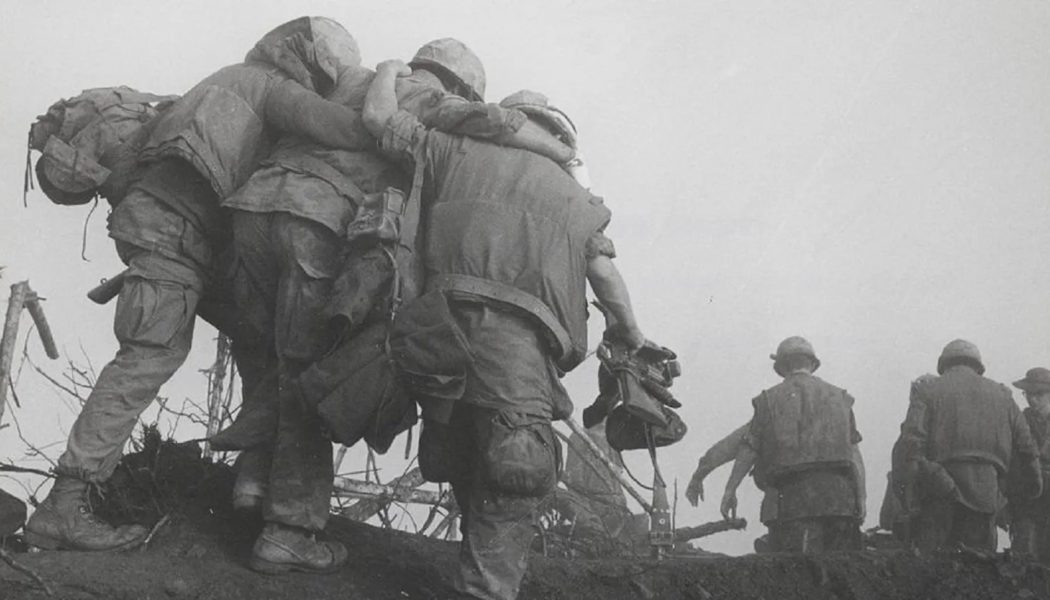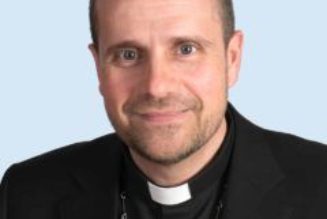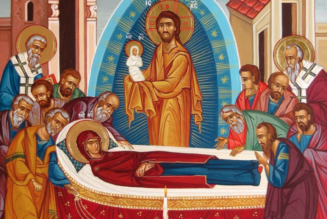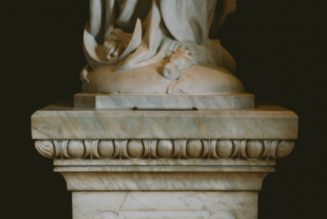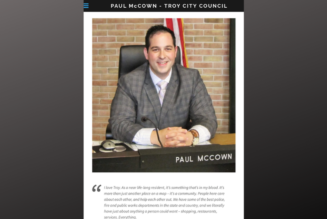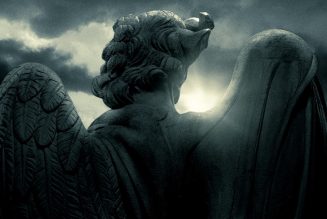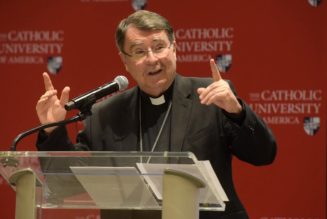
In Lent, Jesus taught us how to recommit ourselves to the Suffering Servant and join his sacrifice. In the Easter Season, he teaches us how to commit ourselves to his Risen Life and join him in his joy.
On the Fifth Sunday of Easter, Year A, he makes a key turn in that journey, drawing our attention to the place of safety and peace on the other side of the cross.
Ironically, his consoling words about heaven come immediately after his disturbing words about betrayal.
“Let not your hearts be troubled,” is the first thing Jesus says in this Sunday’s passage from the Gospel of John. In context, these are the very next words after Jesus tells his apostles that one of them will betray him tells Peter that “the cock will not crow before you deny me three times.”
We can take “Let not your hearts be troubled” in the same spirit. It’s not the Risen Lord saying, “Don’t worry, the battle is over. Nothing bad will happen.” It’s the Man of Sorrows on the eve of destruction saying, “Everything is about to fall apart, but stay strong.”
The context makes everything clearer. Why does he say “You have faith in God; have faith also in me”? Because the Apostles, good Jews, know all about believing in God through difficulties — slavery in Egypt, wandering in the desert, fearsome battles, and humiliating exile — and they are about to need all the faith and hope they can muster.
And in context, when he says his Father’s house has many rooms and “I am going to prepare a place for you,” imagine him like a hero crouching next to the wounded in a nighttime battlefield saying, “I’ll go clear a path through the enemy for us, then I’ll come back and get you.”
He wants to recast the darkness they are walking into from ignominious defeat on the cross to a glorious new exodus out of the dark valley the enemy has lured them into.
The context makes the “stupid questions” of Thomas and Philip seem not so stupid after all.
In Bible studies, I have often heard (and said) that the two apostles’ questions here are basically clueless. Thomas says “Master, we do not know where you are going. How can we know the way?” even though Jesus has already told the apostles about the passion and resurrection repeatedly. Philip says, “Master, show us the Father and that will be enough for us,” even though Jesus has already revealed his divinity unmistakably.
But these questions also make a lot more sense in context. After 2,000 years of Church history, we have had a lot of time to think through what the divinity of Christ means. With zero years of Church history, they had nothing but their love and trust of Jesus to go on as he made startling statements that seemed like non sequitors. In fact, it is their very questions that are the reason we know what we know about Jesus.
If you ever wondered what “consubstantial with the Father” means in the creed we say at each Mass, Jesus explains it here: “I am in the Father and the Father is in me. The words I speak to you I do not speak on my own. The Father who dwells in me is doing his works.” In other words, the Father and Jesus are so closely identified that when Jesus speaks you can say “The Father says that,” and when he acts you can say “The Father does that.” In a word: consubstantial.
That’s why, when Jesus crouches by us in the trenches and says, “I’ll go get things ready then come and get you,” we can trust him.
The next thing he says is challenging as well as consoling.
“I am the way, the truth, and the life,” Jesus says. Two millennia after his resurrection, what that means is a lot clearer to us than it was on the night before he died.
When he said “I am the life” to his apostles, maybe they could have remembered what he told Martha: “I am the resurrection and the life; whoever believes in me, even if he dies, will live, and everyone who lives and believes in me will never die.” But when he says “I am the life” to us, we should absolutely remember last Easter Sunday, and 2,000 before it in history.
When he said “I am the truth” to the apostles, maybe they could have remembered when he said, “I am the light of the world.” But when he says “I am the truth” to us, we absolutely should remember the Apostolic Fathers, the Doctors of the Church, and the Catechism, all delivering wisdom that has stood the test of time.
When he says “I am the way,” though, well, maybe that is hard for everyone, then and now, to understand.
St. Augustine says, “Everyone understands the truth and the life. Even the philosophers of the world have seen that God is the life eternal, the truth which is the end of all knowledge. But not everyone has found the way.”
And what is the way? The cross. When he said “I am the way” to the apostles, they should have remembered his predictions of the passion and “Whoever wishes to come after me must deny himself, take up his cross, and follow me.” We should remember the same thing when he says “I am the way.”
But more immediately this Sunday, we should also remember the First and Second Reading.
Because, while Jesus makes it clear that we are the victims and he is the hero in a rescue story, Sunday’s readings reveal something more.
There are fascinating parallels between the Second Reading from the First Letter of Peter and the Gospel. When Jesus says “In my Father’s house there are many rooms,” the Apostles would have thought of the Temple, with its many rooms prepared for various persons and purposes. So, when St. Peter calls us “living stones” who are to be “built into a spiritual house” he is describing the same reality.
Just as Jesus goes to prepare a place for us on his rescue mission, we need to prepare a place on earth for the walking wounded all around us in our own rescue mission. We are “a chosen race, a royal priesthood, a holy nation, a people of his own” meant to “announce the praises of him who called you out of darkness and into his wonderful life.”
What would it look like if we did that? The First Reading, from the Acts of the Apostles, shows us. It presents a moment in the life of the Early Church, the Church which is the model the Church in all times should actively work to live up to. In particular, it’s a picture of the Church deciding how best to rescue the weak and wounded — widows in this case: First through prayer and then through whatever practical means are necessary to get the job done.
Clearly, we are meant to do the same.
We don’t exist just as individuals, but as a group. And we don’t exist just as a group, but as the body of Christ. He is “the way, the truth and the life” that makes his body, the Church, a place of safety, wisdom, and vitality.
He is consubstantial with the Father. What he says, the Father is saying, and what he does, the Father is doing. He did something analagous when he made us his temple, his Church. Jesus should speak in our words, and Jesus should act in our deeds. How is that even possible? Through the Mass, which is the ultimate expression of “I am the life,” because Jesus said “I am the Bread of Life … Whoever eats my flesh and drinks my blood remains in me and I in him.”
The Way that Jesus has set us on is hard, but it’s the only Way, and every inch of it is lit by the light of his truth and every step of it is empowered by his life in us each. We are meant to bring as many wounded with us as possible, even if it kills us, since true love is fraternal sacrifice in battle. His Way leads to his Father’s house, where he has prepared rooms for everyone who did his work on earth, so that we can bask in his “Well done!” for eternity.
Image: Wounded Marine, Wikimedia Commons.
